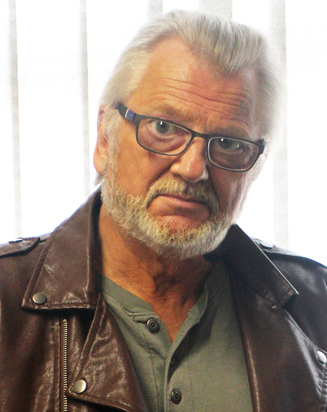For over 50 years, Steve Collins, pictured, of Cheshire-based PS5 has trained and educated thousands, all over the world, how to keep out of harm’s way and if necessary defend themselves with physical action.
Your safety depends upon your ability to accurately assess situations and people. That said, we often take this ability for granted, after all, we use it every day, every time we drive a vehicle or cross the road we are assessing the situation to stay out of harm’s way. As a professional teacher in the security sector, part of my job is to train people to assess and understand when a situation or a person poses a risk to their safety.
You may do this intuitively, and rely on your ‘gut feeling’, which is a perfectly acceptable strategy. Sadly, in today’s climate, because of the increase of violence we have seen on our streets such as protesting and even rioting, I would like to introduce you to a more structured approach to assessing risk. There are two categories of risk:
– High Risk
– Unknown Risk
A drunk brandishing a large knife or a broken bottle would be an obvious example of a ‘High Risk’ situation. However, someone who seems passive and unarmed should not automatically be deemed as ‘No Risk’, but should always be considered as an ‘Unknown Risk’. There is no such thing as ‘No Risk’, it does not exist. (See my R.E.A.C.T article on Presumed Compliance).
Any other way of categorising risk will lead to complacency and by definition could have catastrophic consequences, and all because you made the mistake of assuming someone was of ‘No Risk’. To assess the risk involved in any situation, ask yourself the following questions:
– What threats do the people involved pose to me?
– What other hazards are there as well as the people?
– What can I do about it?
– What do I want to achieve?
This assessment may have to be done rapidly, as one rarely enjoys the luxury of unlimited time to prepare. Violent incidents are explosive, they can happen in the blink of an eye and when the factors involved change, you may need to re-assess a situation rapidly. For example, if a passive individual suddenly becomes aggressive, he or she will immediately change from an ‘Unknown Risk’ to a ‘High Risk’. You will always form your initial assessment of a person from their behaviour, but this can change and you must be flexible enough to change with it.
The objective
When assessing any situation you should base your thinking on the objective, or outcome, you want to achieve. The primary consideration should always be your own safety, the safety of your loved ones or those in your care, and if you are a police officer or security professional the safety of the general public.
It is essential to never lose sight of this objective.
The subject
You must assess an individual’s motivation, opportunity and capability to cause you harm. Once again ask yourself:
– Does this person want to harm me?
– Has this person a chance of harming me?
– Does this person possess the ability to harm me?
If the answer to all or any one of these questions is yes then treat him or her as ‘High Risk’.
The environment
Assessing the environment is vital. You may have assessed that you could be in danger, but are there any innocent people or potential victims nearby that could also be in danger. If so, is there anything you can do to reduce the risk. Other hazards in the environment might include associates of the individual bystanders becoming involved or anything which could be used to cause injury. Such as made, adapted or intended weapons, vehicles or even ferocious dogs. (See my R.E.A.C.T article on Caught in a Crowd).
Available resources
The last part of the assessment is what resources do you have available to you, such as:
– Is there anyone in the vicinity that could assist you?
– Is your age, weight, build and gender relative to the person posing the threat?
– How does your relative fitness and skill level compare to that of the person posing the threat.
– Is there any equipment or items at hand that you could legally and ethically deploy to protect yourself?
Your ability to accurately assess situations and people is a real life-saving skill, and just as important as any self-defence technique you have been taught.
A good assessment may well save you from being assaulted. There are few jobs where an individual’s life is at risk in the course of their employment, however, armed forces, police and security personnel are just such professions, but sadly we live in a world where members of the public are becoming victims of violent weapons related crime, more and more.
Whether you are a soldier, police officer, security guard or post man, risk assessing individuals and potentially dangerous situations is a rule for life, because there is absolutely no merit what so ever in risking your safety unnecessarily. If there ever was a time that everyone should learn about personal protection and self defence and acquire the ability to accurately assess potentially dangerous situations … IT’S NOW!
Your safety is your responsibility, because believe me, no one is coming to your rescue, and the writing is definitely on the wall.










